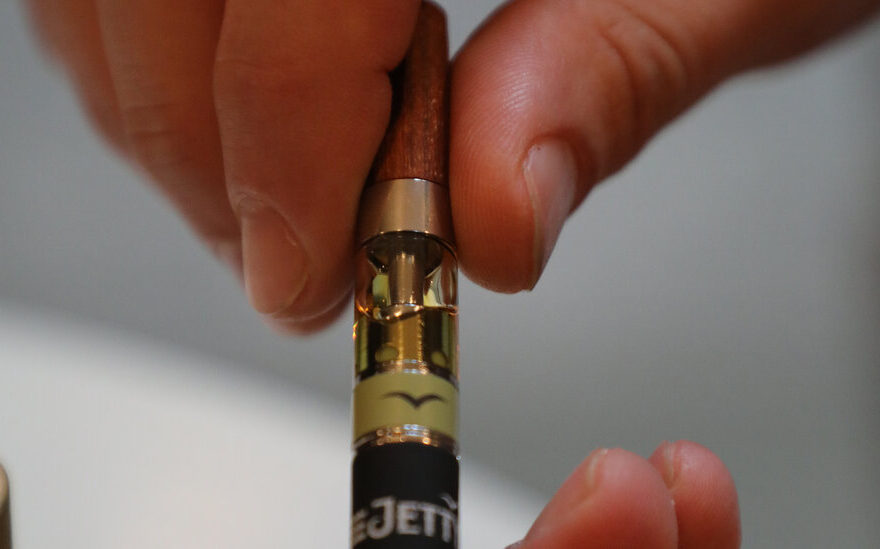The U.S. Food and Drug Administration is reminding caregivers to store tobacco vaping cartridges safely to prevent children from being poisoned by the liquid inside, noting that e-cigarette exposures have increased sharply over the last year.
A newsletter published last week by the F.D.A. included data from a Centers for Disease Control and Prevention report in June that found that there was a 32 percent increase for the month of March 2023 compared with the month of April 2022 in exposures to e-cigarettes or e-liquids reported to U.S. poison centers, most in children under 5. National data also suggests exposures hit an all-time high in 2022.
“We’re seeing more of these products in the household,” said Anthony Jaworski, clinical program manager for the Poison Control Center at Children’s Hospital of Philadelphia. “And with more of these products in the household, more children are getting access to them.”
The F.D.A. has restricted flavored e-cigarettes, but loopholes in the ban, along with an influx of illegal vapes, mean that e-cigarettes and e-liquids with fruit and candy flavors are continuing to end up in American homes where they can get into the hands of young children curious about what Dr. Jaworski called their “enticing” smell and packaging.
Exposure to just a few drops of liquid nicotine may be harmful to young children if inhaled, swallowed or absorbed through their skin.
“Each milliliter of vaping liquid can contain the amount of nicotine that is equivalent to about one or two or even sometimes five cigarettes,” Dr. Jaworski said.
What parents should look out for
Though reports of increasing exposures are cause for alarm, a majority of cases in children tend to be “mild,” Dr. Jaworski said. In the recent C.D.C. report, 8 percent of cases were treated at a health care facility and less than 1 percent resulted in hospital admission.
Still, even “minor” symptoms may be distressing to children and their parents, and tend to include reactions like vomiting, paleness of the skin and sweating, Dr. Jaworski said.
“They usually start about 15 to 20 minutes after the initial exposure occurs,” he said. “They could last anywhere from one to two hours.”
The F.D.A. has also warned that more serious effects can occur, including seizure, coma, respiratory arrest and even death, and recent news stories have included harrowing accounts from doctors who have treated young patients with “violent reactions” to nicotine poisoning. Parents should take very seriously symptoms that last for more than an hour or two, Dr. Jaworski said, as well as any signs of confusion or excessive tiredness, which may indicate that nicotine has penetrated the brain.
If you believe that a child might have suffered any kind of accidental exposure, call Poison Control to speak with someone right away, Dr. Jaworski said.
He urged caregivers to store the number in their phones.
How to prevent accidental nicotine exposures
Ideally, parents and caregivers would not keep vapes in the home, experts said, but if they do, they can still mitigate the risks. Avoid flavored products that look or smell appealing to kids, Dr. Jaworski said, and try not to use or refill e-cigarettes in front of them.
“We really harp on safe storage,” said Natalie Rine, director of the Central Ohio Poison Center at Nationwide Children’s Hospital. “There are different things out there: lockboxes, locked cabinets — things kids can’t easily get into.”
E-liquid containers are required to have child-resistant packaging, and the F.D.A. reminds parents to lock product caps by turning the cap until they cannot twist it anymore. But Dr. Rine said her experience in poison control had taught her that there was no such thing as a truly childproof container.
“Kids can be Houdinis sometimes,” she said, emphasizing the importance of keeping unsafe products locked away and out of sight.
The F.D.A. report noted that nicotine cartridges could also harm pets who were exposed to the liquid.
If you spill any e-cigarette or vaping liquid, clean it up with soap and water, the report said. And parents should instruct kids that they should never touch a cartridge, which is for grown-ups only.
Though adolescents and teens are not as likely to accidentally drink liquid nicotine, they face harms from e-cigarettes as well. National survey data revealed that 14 percent of high school students reported using e-cigarettes in 2022, and one in four who were e-cigarette users said they vaped every day.
Parents should look for vaping paraphernalia among their children’s belongings and share their concerns about the risks e-cigarettes pose, particularly to the parts of adolescents’ brains responsible for impulse control, learning and mood.
“There’s this misconception that since it doesn’t have that stinky odor, it’s obviously going to be safer,” Dr. Rine said. “Any amount of nicotine is going to be addictive, and addiction happens quickly.”
If you or someone you know may have ingested a dangerous substance, please contact Poison Control immediately at 1-800-222-1222 or go to poisonhelp.org for assistance.
Catherine Pearson is a reporter for the Well section of The Times, covering families and relationships. More about Catherine Pearson
Source: Read Full Article
